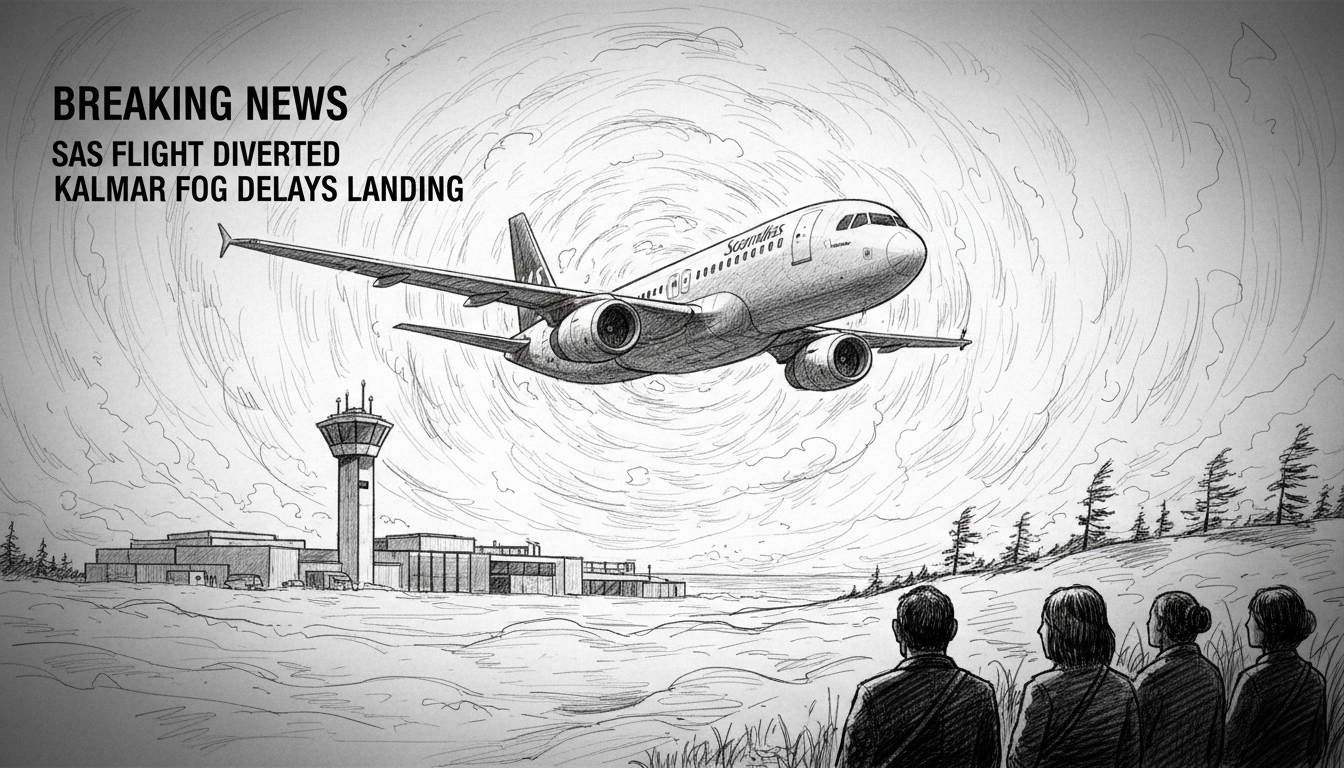A Scandinavian Airlines passenger flight from Stockholm could not land at Kalmar Airport due to heavy fog conditions. The aircraft was scheduled to land at 3:10 PM but had to circle above Kalmar Öland Airport until conditions improved.
Airport operations manager Pernilla Bengtsson explained the situation in a statement. She noted that such diversions occur occasionally, particularly during autumn months. Cold and warm air masses meeting create the dense fog that disrupts flight operations.
The plane successfully landed shortly before 4:00 PM after approximately 50 minutes of circling. All passengers arrived safely despite the delay.
This incident highlights the operational challenges Nordic airports face during seasonal weather transitions. Autumn brings frequent fog events to coastal regions like Kalmar, where Baltic Sea moisture interacts with changing land temperatures. These conditions affect flight schedules across southern Sweden regularly.
Kalmar Airport serves approximately 120,000 passengers annually, connecting this southeastern Swedish city with Stockholm and international destinations. Weather-related disruptions occur several times each year, particularly during spring and autumn transitional periods.
Airport officials maintain strict safety protocols for low-visibility conditions. Pilots must meet specific visual requirements to attempt landings. When fog reduces visibility below minimum standards, aircraft either divert to alternate airports or circle until conditions improve.
Passengers affected by such delays typically receive assistance according to airline policies. Scandinavian Airlines has procedures for meal vouchers and potential hotel accommodations for extended delays. The airline's operational flexibility allows for quick recovery from weather disruptions.
Regional airports across Sweden implement similar safety measures during adverse weather. This consistent approach ensures passenger safety remains the priority despite schedule disruptions. Travelers flying during transitional seasons should anticipate potential weather-related delays and plan accordingly.
Modern aircraft navigation systems provide additional safety margins during reduced visibility. However, visual confirmation remains essential for final approach and landing phases. This balance between technology and pilot judgment defines aviation safety in challenging Nordic weather conditions.

